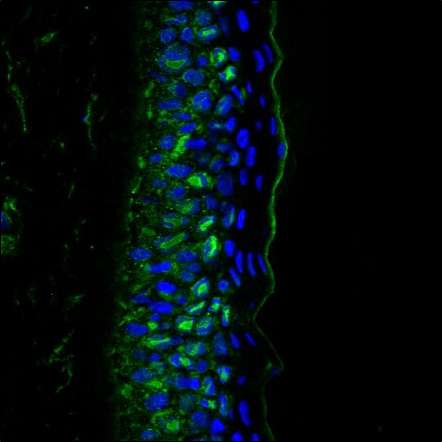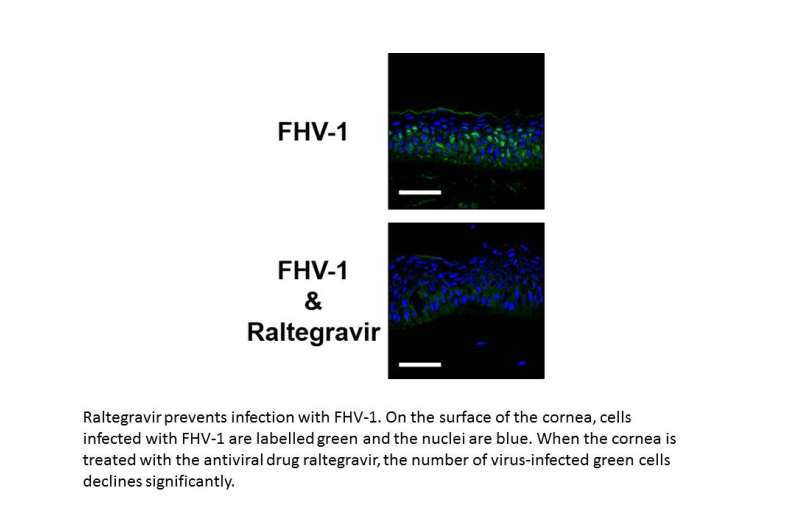Model helps identify drugs to treat cat eye infections

It's a problem veterinarians see all the time, but there are few treatments. Feline herpes virus 1 (FHV-1) is a frequent cause of eye infections in cats, but the drugs available to treat these infections must be applied multiple times a day and there is scant scientific evidence to support their use.
Now scientists at the Baker Institute for Animal Health at Cornell's College of Veterinary Medicine have developed a model system that can be used to test drugs for treating these eye infections, and early results have pointed to a new drug for treating FHV-1 that will soon head to clinical trials. The work is reported in the Journal of General Virology.
"Herpes-induced cornea infections are a big problem in cats," says Dr. Gerlinde Van de Walle, who led the study. Cats infected with FHV-1 will blink continuously, squint and have a teary, sore-looking eye or eyes. "If not treated, FHV-1 infection can eventually lead to blindness," she says.
"We wanted to develop a model system that could predict whether an antiviral drug would work against FHV-1 in cats," says Van de Walle. They were also searching for an easy way to identify drugs that could be given only once every 24 hours, because, as vets and many cat owners know, giving medication to a cat multiple times a day can be a difficult, painful thing to accomplish. Smearing ointment in a cat's eyes might be easy the first and second time, but once the cat learns what you're up to with that little tube, she will most likely hide or fight.
Van de Walle and her team used tissues donated from cats that died of causes other than eye disease. The outer clear layer of the eye, called the cornea, is shaped like a contact lens but has the consistency of Jell-O. To maintain the natural, dome-shaped structure of these corneas under laboratory conditions, the team gently filled them with agarose, waited for the agarose to firm up, then turned them over and kept them in a liquid medium. The model better resembles what happens in the eyes of a cat compared with using a single layer of cells in a dish and can, therefore, better predict what to expect in the animal.
To use these petri plate corneas as a model of FHV-1 infection, they applied the virus to some of the corneas and left others uninfected. They then tested the effectiveness of two drugs that are used for topical treatment of FHV-1 eye infections in cats: cidofovir, which is frequently used in the clinic, and acyclovir, which has shown some activity when given frequently. Both drugs cleared the infection when applied every 12 hours, but cidofovir was more effective.

Taking it a step further, Van de Walle and her team used the model system to identify another drug for treating FHV-1 infections. The antiretroviral drug raltegravir is commonly used in humans to treat HIV infections, and although some reports indicated it could be effective against herpes viruses, it had never been used to treat FHV-1 in cats before.
"We found that it is very effective against FHV-1. It even worked when we applied the drug only once every 24 hours," says Van de Walle. This means raltegravir could be just as efficient as the other drugs available for treating FHV-1 infections, but would only have to be administered once daily. Van de Walle says she hopes eventually to see the drug tested in a well-controlled clinical trial.
More information: Gerlinde R. Van de Walle et al, A novel corneal explant model system to evaluate antiviral drugs against feline herpesvirus type 1 (FHV-1), Journal of General Virology (2016). DOI: 10.1099/jgv.0.000451
Provided by Cornell University


















